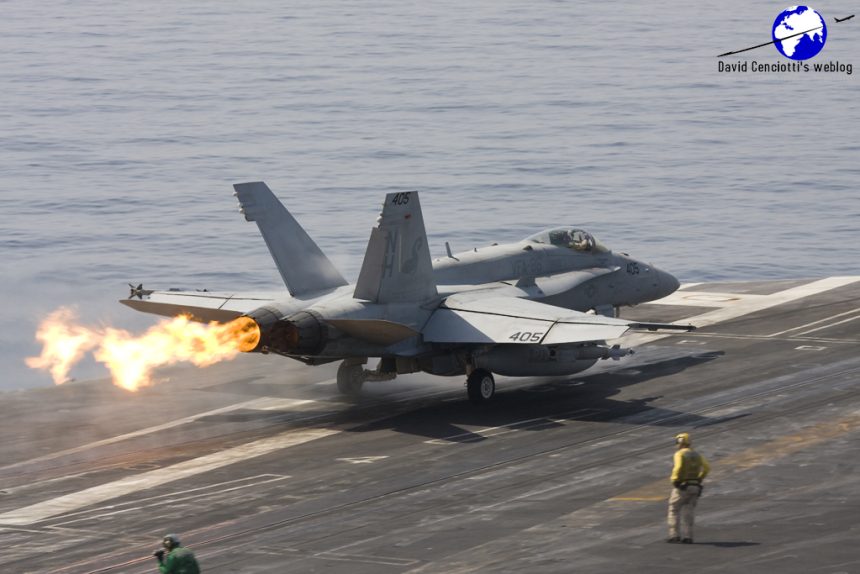A quite embarrassing episode marked the end of MAKS 2011 air show on Aug. 21, at Ramenskoye air base, near Moscow. The Sukhoi PAK-FA/T-50, Russia’s 5th generation fighter plane, was forced to abort take off after suffering a flameout in the right-hand Saturn engine.
As below footage shows, the T-50-2, the second prototype of the stealth fighter (52 Blue), aborts its take off roll after bursts of flames erupted from the engine.
[youtube=http://www.youtube.com/watch?v=eFsHqDLM6mk]
Deploying the airbrakes and the two drag chutes after reaching a speed of around 60 MPH, Sukhoi’s test pilot was able to halt the aircraft well before the end of the runway.
If the PAK-FA flameout in front of some 200.000 spectators had only a negative impact on Sukhoi’s reputation, similar engine failures can be quite thrilling if they occur to fully loaded planes in dangerous phases of a flight: departure, initial climb, landing.
I took the top picture in the Indian Ocean aboard USS Nimitz (CVN-68) on Oct. 19, 2009. An F-18C (BuNo 165205 Modex 405) belonging to the VFA-86 “Sidewinders” experiences a compressor stall during the catapult launch from CAT number 4. The aircraft is fully loaded with fuel and weapons, and it is taking off to perform an on-call CAS in support of Operation Enduring Freedom in Afghanistan.
Fortunately, the aircraft took off in spite of the loud bang and flames coming out from the port engine exhaust that in the second image seems to be operating without the afterburner.
Here’s the entire sequence of the launch showing the single engine departure.
The compressor surge is a particular kind of compressor stall that occurs when the hot vapour generated by the aircraft carrier’s catapult is ingested by the aircraft air intake thus creating a breakdown in compression resulting in a the compressor’s inability to absorb the momentary disturbance and to continue pushing the air against the already-compressed air behind it. As a consequence, there’s a momentary reversal of air flow and a violent expulsion of previously compressed air out through the engine intake producing some loud bangs from the engine and “back fires”.
The compressor will usually recover to normal flow once the engine pressure ratio reduces to a level at which the compressor is capable of sustaining stable airflow. Some engines have automatic recover functions even if pilots experiencing the surge can be compelled to act on the throttle or, in some cases, relight the engine.
Compressor surges are frequent on U.S. aircraft carriers. Unlike the T-50, that could precautionally abort its take off, carrier air wing airplanes can’t stop their run once it’s started. Fortunately, F-18s are used to take off even if an engine is temporarily unserviceable: this shows once again how rusty Legacy Hornet are sometime tougher than some 4+ or 5th generation “colleagues”.
I don’t know if a PAK-FA would be able to take off after experiencing a compressor surge aboard an aircraft carrier but I know for sure the F-35C (that, along with the other variants has returned to fly last week, after being grounded for an IPP failure on Aug. 3) won’t: it’s an easy-to-fly, single-pilot, 5th generation fighter jet. With a single engine.










